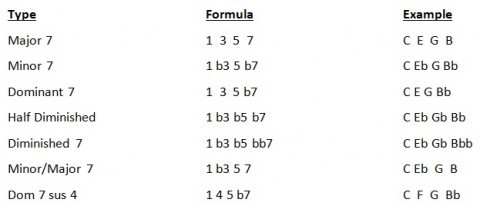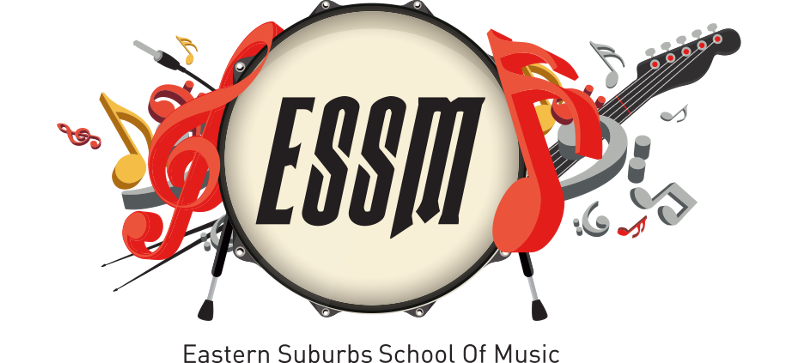Seventh Chords
Going beyond the basic sounds of major and minor chords introduces us to what is labelled in music as seventh chords. These chords contain four different notes. They add colour or extra emotional quality to the triad chords. For more information on what triad chords are see our post about them by clicking here. Detailed in this article is how you can form the following seventh chords:
- major seventh chords.
- minor seventh chords.
- dominant seventh chords.
- half diminished chords.
- diminished seventh chords.
- minor/major seventh chords.
- dominant seven suspended 4th chords
For more information regarding seventh chords and music theory contact Eastern Suburbs School of Music on 0421 705 150 or via the contact form at the top of the page. To practice further I recommend visiting musictheory.net and using the free exercises area of the site.
Major Seventh Chords
Major seventh chords have a very lush and pretty sound. This chord is formed from the 1, 3, 5 and 7 note of any major scale. As an example lets use the A major scale.
A major – A B C# D E F# G# A
We would form this chord by playing the notes A, C#, E and G#. This chord also appears on the 4th degree of the major scale.
Minor Seventh Chords
Minor seventh chords add an airy feeling to the sadder minor sound. It is created from the 1, 3, 5 and 7 notes of the natural minor scale. As an example lets use the B natural minor scale:
B natural minor – B C# D E F# G A B
When playing the B minor 7 chord you would use the notes B, D, F# and A.
Dominant Seventh Chords
The dominant seventh is created from the Mixolydian mode. As we have done in all seventh chords we take the 1, 3, 5 and 7th note from this mode. This chord forms a strong bond with the root chord of a scale. It is played on the 5th degree chord of the major and harmonic minor scales.
G mixolydian – G A B C D E F G
To form a G7 chord you would play the notes G, B, D and F. Note that the triad of this chord is a major.
Half Diminished
The easiest way to create half diminished chords is using the minor seventh. Another name for the half diminished chord is Minor 7 flat 5. You can take any minor seven chord and drop the 5th note of the chord by one note (a semitone) and you have the half diminished. Earlier we created B minor 7. Let’s turn that into a half diminished chord.
B minor 7 = B D F# A
B half dim = B D F A
We created B minor 7 taking notes 1, 3, 5 and 7 from the B minor scale. Note how the F# has changed to F to make this B half diminished. This trick will work with all minor seventh chords to flip them into a half diminished.
Diminished Seventh Chords
These chords are formed from the diminished scale. We still use the 1, 3, 5 and 7 of the scale.
C Diminished Scale – C D Eb F Gb Ab Bbb B C
To form this chord we use C Eb Gb Bbb. We need to call the last note b double flat in order to maintain the concept of spelling the chord correctly. A seventh note needs to be seven letters away in the musical alphabet from the starting note. We call this being “Enharmonically correct”. On your instrument you will play the note known as A. To spell the chord and therefore correctly write the chord notes down we need to use B double flat in this instance.
Minor/Major Seventh Chords
This chord is formed from the 1, 3, 5 and 7 of the harmonic and melodic minor scale.
B Harmonic Minor – B C# D E F# G A# B
The B minor/major 7 chord would be played by sounding the notes B, D, F# and A#. Notice how the start of the chord is a minor triad.
Dominant 7 Suspended 4 Chords
Another common seventh chord is the Dom7 sus4 sound. This sound is commonly heard in pop songs. This chord can be formed by taking the 1, 4, 5 and 7 of the Mixolydian mode. Earlier we formed the G7 chord. By taking note 4 instead of note 3 we create G7sus4.
G7 – G B D F
G7sus4 – G C D F
Comparing Chords
By using the below table we can compare how the chord is altered in relation to the notes that are in the major 7. 






 0421 705 150
0421 705 150